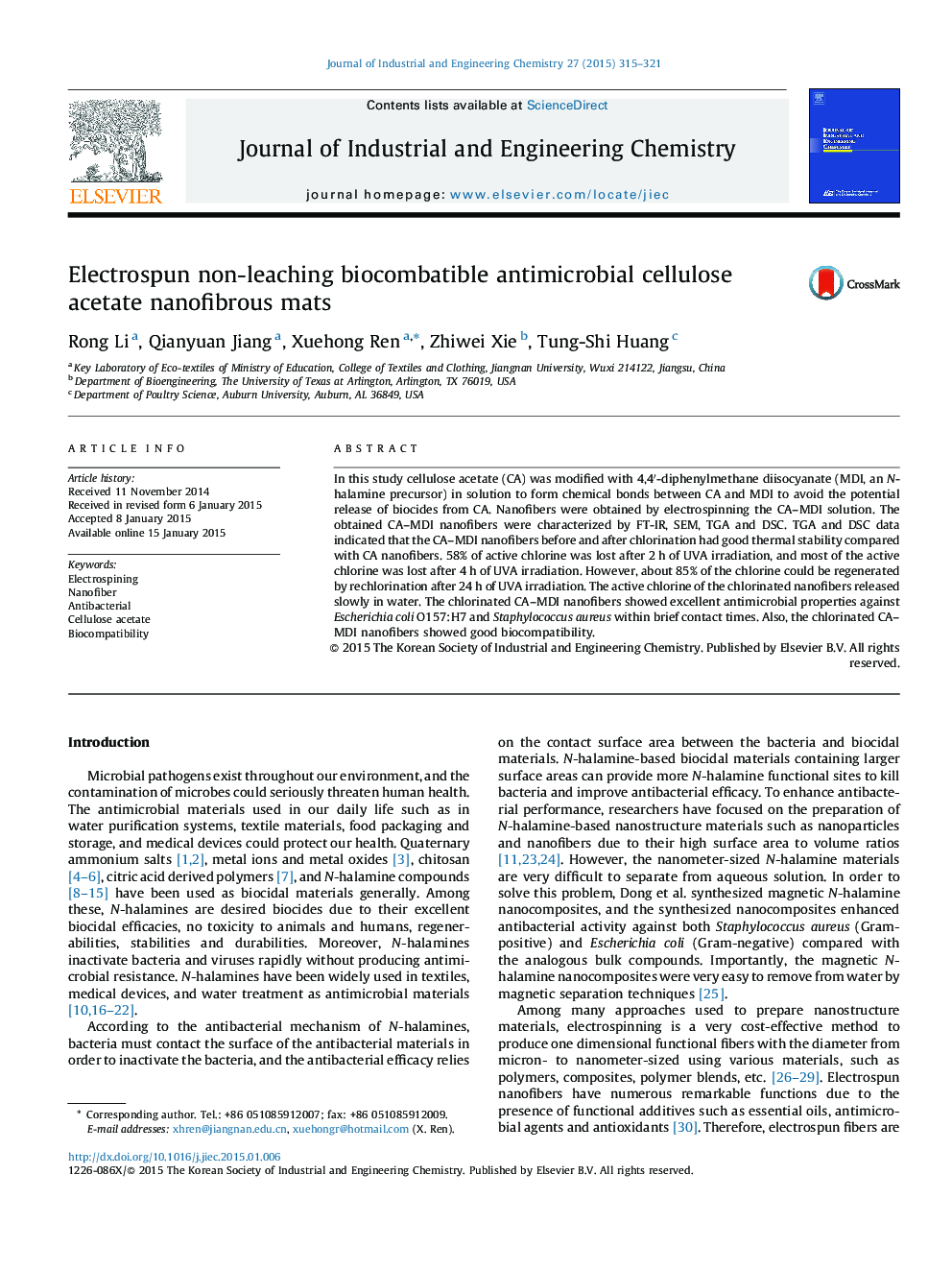| Article ID | Journal | Published Year | Pages | File Type |
|---|---|---|---|---|
| 226763 | Journal of Industrial and Engineering Chemistry | 2015 | 7 Pages |
•Non-leaching antimicrobial cellulose acetate nanofibrous mats were prepared by electrospinning.•The nanofibers showed excellent efficiency against Escherichia coli and Staphylococcus aureus.•The chlorine on the nanofibers showed good stability in water.•The chlorinated CA–MDI nanofibers showed good biocompatibility.
In this study cellulose acetate (CA) was modified with 4,4′-diphenylmethane diisocyanate (MDI, an N-halamine precursor) in solution to form chemical bonds between CA and MDI to avoid the potential release of biocides from CA. Nanofibers were obtained by electrospinning the CA–MDI solution. The obtained CA–MDI nanofibers were characterized by FT-IR, SEM, TGA and DSC. TGA and DSC data indicated that the CA–MDI nanofibers before and after chlorination had good thermal stability compared with CA nanofibers. 58% of active chlorine was lost after 2 h of UVA irradiation, and most of the active chlorine was lost after 4 h of UVA irradiation. However, about 85% of the chlorine could be regenerated by rechlorination after 24 h of UVA irradiation. The active chlorine of the chlorinated nanofibers released slowly in water. The chlorinated CA–MDI nanofibers showed excellent antimicrobial properties against Escherichia coli O157:H7 and Staphylococcus aureus within brief contact times. Also, the chlorinated CA–MDI nanofibers showed good biocompatibility.
Graphical abstractFigure optionsDownload full-size imageDownload as PowerPoint slide
